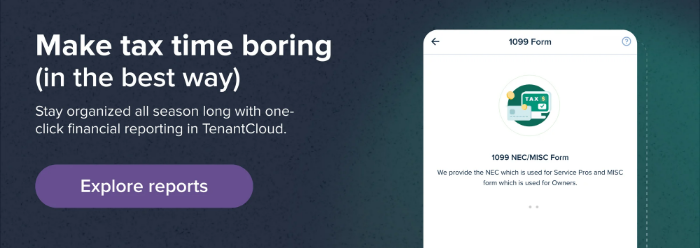Are you a property manager striving to keep organized records to improve your property’s management? By understanding a lease ledger as a property owner, you can maximize your profits as a real estate investor while also providing added benefits for your tenants.
In this article, we will dive into the concept of a rent ledger to explore what it is, how it works, and how it differs from a rent roll. We’ll even examine the benefits of these and how you can create one on your own. Whether you are a landlord handling multiple properties or an individual property owner managing a single rental unit, a rent ledger is indispensable, and you’ll learn exactly why that is!
If you’re ready to learn more, read on. Let’s discuss what a rent ledger is first and why it matters.
What is a Ledger for Rent and Why Does It Matter?
Simply put, a rent ledger is a detailed record of tenant rent payments. It typically includes information such as the amount paid, the payment date, and any outstanding balances or late rent. For property managers and landlords, the rent ledger helps you monitor rental income and identify any tenant payment discrepancies. It also enables you to ensure you continue to afford mortgage payments if required for your specific property.
Maintaining an accurate and up-to-date rent ledger is one of the basic fundamental tasks involved in property management. If you can’t keep an updated record of your rental payments, it can decrease transparency between the landlord and the tenants, create poor communication regarding payments, and more. Essentially, if you can’t keep a rent ledger, you’ll fail to keep your property in tip-top shape.
As long as you’re keeping an accurate rent ledger, you can prepare yourself for potential disputes and have a tool to help if a conflict arises. For those planning for financial concerns like landlord insurance or mortgage payments, a rent ledger report continues to be a vital resource.
Related: Is Paying Rent with Venmo Safe? Pros, Cons, and Alternatives Explained
What Does a Rent Ledger Mean? Examining Its Key Components
As one of the foundational elements of effective property management, a rent ledger is an absolute necessity for any property manager who wants to have a thriving real estate investment portfolio. But what exactly goes into these documents?
A rent ledger is a comprehensive record that details each tenant's financial interactions with a rental property. It’s essential to have a record of all the payments and late fees paid to the landlord. It includes critical components such as:
- Tenant Information: Essential details like names, contact information, and lease start and end dates to help keep track of who lives where and for how long.
- Rent Amount: The agreed-upon monthly rent stated in the lease agreement and any rent increases that may be required for long-term tenants.
- Payment Dates and Methods: Accurate entries of when rent was paid and the method used—by check, bank transfer, money order, or other means.
- Lease Agreement Terms: Specific terms and conditions, including due dates, late fees, and any amendments to the original lease that are communicated to both parties involved.
Unlike general financial statements or bank reconciliations, a rent ledger focuses solely on rental transactions, providing a clear, concise account of all rent-related activities. This specificity aids landlords and property managers track rental income, identify delinquent payments, and ensuring compliance with lease terms.
Incorporating a detailed and precise rent ledger into your property management practice facilitates efficient rent collection and enhances transparency and trust with tenants. But what about rent rolls? Are they the same as rent ledgers? Let’s see why these two records differ and how.
Rent Ledger vs. Rent Roll: What is the Difference?
When you first hear the terms rent roll and rent ledger, they sound like they are one and the same. However, they are not. A rent ledger deals with the financial transactions for each tenant that can be used for record-keeping, eviction proceedings, and disputes, but a rent roll does not keep track of the flow of money or rental payments for the property. Rent ledgers are individual records for each tenant, but a rent roll differs significantly.
A rent roll is a comprehensive summary of all the rental units in a property or portfolio, listing each unit's rental rate, lease terms, and tenant details. The primary function of a rent roll is to provide an overview of the property's financial performance and occupancy status. So, in other words, to see the economic health of the entire property, you’d look at a rent roll. A comprehensive rental ledger is primarily used to see if your tenants are paying you on time.

While both have distinct purposes, property managers use rent or tenant ledgers for detailed tenant management and dispute resolution. On the other hand, rent rolls are used for higher-level financial analysis and property valuation. Together, they complement each other in property management, offering unit-specific and big-picture insights that people need for profitable real estate investing.
Now that you understand the difference between a rent roll and a rental ledger let’s explore the benefits of using one.
Related: How ACH Payments Simplify Rent Collection for Landlords and Tenants
The Benefits of Using a Rent Ledger for Property Managers and Renters
As we have explored, a rent ledger is crucial in efficient property management, serving as an indispensable tool for both property owners and tenants. The benefits for property owners and managers are vast.
How Rent Ledgers Benefit Tenants
Renters reap significant benefits from a rent ledger because it can provide them with a transparent record of rent payments, offering peace of mind and proof of payment in case of any misunderstandings. They have a record to look at to see if they have been keeping up with payments, and they can keep track of any late fees incurred.
If renters are seeking to apply to other properties in the future, a rental ledger is a significant bonus that can help with making the application process even easier. Prospective landlords often look favorably upon applicants who can demonstrate a reliable payment history, making it easier for tenants to secure new rental properties.
How Rent Ledgers Benefit Property Managers
For property owners, a rent ledger simplifies the rent collection process and tracking. By maintaining a detailed record of every rent payment, property managers can effortlessly monitor payment statuses and address any discrepancies while also ensuring that they are keeping up with their own financial obligations for their real estate properties.
Another benefit of a well-kept rent ledger is that transparency helps resolve disputes with tenants. With a clear history of all transactions, there is no room for confusion between landlords and renters.
Additionally, an accurate rent ledger is essential for tax documentation and compliance, as complete records help you avoid legal trouble. If you keep the books up-to-date, you’ll find yourself with less trouble in the future and more clarity on the health of your property.
For property managers, keeping a rent ledger is essential, but you also have to know how to create one. Let’s dive into the critical components needed in your tenant rent ledger.
How to Create a Rent Ledger in Four Steps
If you’re new to this, don’t worry—we have four steps to help you set up your rental ledger template. Here's an in-depth look at how to set up a comprehensive rental ledger. It only takes four easy steps:
- Collect Necessary Tenant Information:
Begin by gathering all essential tenant details, including the tenant's name, contact information, rental property address, and lease start and end dates. This information is fundamental for accurate record-keeping and a must before you start with further steps of the rent ledger creation process. - Record Lease Agreement Details:
Document all pertinent details of the lease agreement. This should include the rent amount, payment due dates, security deposit amounts, and any other financial obligations such as late fees or utilities included in the rent. Make sure you leave no detail off the record! - Track Monthly Rent Payments and Additional Fees:
Keep a detailed record of each monthly rent payment, noting the date and amount received. Additionally, record any other transactions like late fees, security deposits, or maintenance fees. This ensures you have a detailed account of all money exchanged, and it will help you communicate this to prospective future landlords of your tenants’. - Update Regularly and Ensure Accuracy:
Regularly update the ledger to reflect new payments and changes. Ensuring accuracy in your records will help prevent disputes and provide a clear financial history for both you and your tenants. The more up-to-date it is, the better it is for both you and your renters in the future.
With these four steps, you’re all set to create your rent ledger template to upgrade your bookkeeping!
Conclusion
A rent ledger is one of the most indispensable tools you have available, whether you’re renting properties to tenants or a renter yourself. For property managers seeking a streamlined, effective way to keep track of the necessary aspects of their tenant rent ledgers, why not consider a tool like TenantCloud?
With the ability to store tenant information and manage rental applications—as well as many other features—it’s a digital tool that is a must for the future of property management. Learn more about our property management software today and how it can transform your real estate investments.







